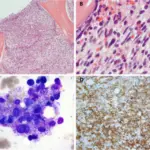Transfusion related acute lung injury is a disease that occurs on the lungs after a blood transfusion is done.
What is the Pathology of Transfusion Related Acute Lung Injury?
The pathology of transfusion related acute lung injury is the study of disease that affect the lung after a transfusion process has occurred.
-Etiology: The cause of transfusion related acute lung injury is not fully understood but it is immune mediated, underlying condition, massive transfusion.
-Genes involved: None.
-Pathogenesis: The sequence of events that lead to transfusion related acute lung injury are: plasma containing high levels of anti-HLA antibodies which bind to leucocytes of recipient. These leucocytes then aggregate in pulmonary micro-mutation and release mediators of increased vascular permeability resulting in acute pulmonary oedema and signs and symptoms of respiratory failure.
-Morphology: NA.
-Histology: NA.
How does Transfusion Related Acute Lung Injury Present?
Patients with transfusion related acute lung injury typically affect male more than female present at age range of less than 20 years. The symptoms, features, and clinical findings associated with transfusion related acute lung injury include cyanosis, fever, hypoxemia, dyspnea and hypotension.
How is Transfusion Related Acute Lung Injury Diagnosed?
Transfusion related acute lung injury is diagnosed by plasma levels of the brain natriuretic peptide, blood culture.
How is Transfusion Related Acute Lung Injury Treated?
Transfusion related acute lung injury is treated by immediate discontinuation of the blood transfusion, oxygen therapy and treat the symptoms as they occur.
What is the Prognosis of Transfusion Related Acute Lung Injury?
The prognosis of transfusion related acute lung injury is good.



